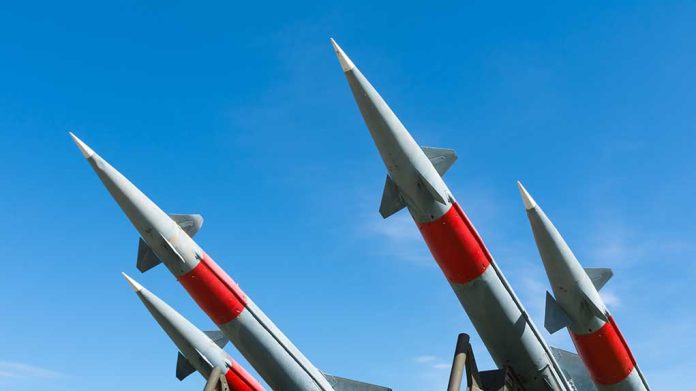
The recent missile defense test conducted by the U.S. military at Guam’s Andersen Air Force Base has prompted a regional security shift while eliciting concerns from local indigenous groups.
At a Glance
- The U.S. completed its first ballistic missile intercept test in Guam, advancing regional defense capabilities.
- Utilizing the Aegis Guam System, the test signifies enhanced defense against China and North Korea.
- Guam’s role as a U.S. strategic stronghold in the Pacific is reinforced by this achievement.
- Indigenous Guamanians voice concerns over increased militarization and its potential impacts on their land.
U.S. Missile Defense Capabilities in Guam
The U.S. military successfully conducted its inaugural interception of a ballistic missile using the missile defense system based in Guam. With the Aegis Guam System and the new AN/TPY-6 radar, capable of tracking and intercepting a medium-range ballistic missile, this test underscores the Pentagon’s strategy for enhancing regional defenses. The AN/TPY-6 radar builds upon technology from the Long-Range Discrimination Radar in Alaska.
This marks a significant development as the U.S. bolsters its defensive capabilities amid escalating tensions with China and North Korea. Rear Adm. Greg Huffman of the U.S. Navy stated, “It confirmed our ability to detect, track, and engage a target missile in flight, increasing our readiness to defend against evolving adversary threats.” The successful interception is also a testament to technological collaboration within the Department of Defense.
Strategic Significance of Guam
This test underscores Guam’s central role in U.S. defense strategies, emphasizing its importance as a military outpost in the Pacific. The Defense Department’s agenda to construct a comprehensive defense network, the Guam Defense System (GDS), includes deploying up to 20 air defense sites integrated with military assets such as the Patriot missile defense system. Some components of this system are anticipated to become operational by 2026.
Despite the strategic advancements, the indigenous Chamoru people remain apprehensive about further militarization of their territory. Concerns revolve around the environmental and cultural implications of such military enhancements. Though an environmental assessment has indicated no significant threats, local opposition continues to mount as defense activities amplify.
The emergent Guam Defense System for the 360 degree air and missile defense of that island is one of the most critical AMD development efforts underway.
Today's test is a milestone toward integrating several distinct AMD systems to deal with wicked hard threats. pic.twitter.com/5xlXPM78f9
— Tom Karako (@tomkarako) December 10, 2024
Future Developments and Local Opposition
The U.S. military plans to relocate 5,000 Marines from Okinawa to Guam by 2028, partially driven by military threats from neighboring adversaries. Meanwhile, the Missile Defense Agency (MDA) intends to conduct ongoing testing flights, furthering its defense architecture and technological sophistication. Lockheed Martin highlighted the significance of these tests in evaluating the missile defense system’s efficacy against realistic threats.
The Indigenous community’s dissent highlights a broader tension in balancing national security interests with local cultural and environmental preservation. As the Guam Defense System progresses, collaboration between defense entities and Guam’s community leaders will be vital in equitably addressing these opposing interests.
The developments in Guam signify a robust U.S. commitment to sustaining regional security and technological readiness in the Indo-Pacific. Nevertheless, the road ahead entails harmonizing these advancements with the voices of Guam’s native populations, ensuring a defense mechanism that respects both strategic imperatives and cultural heritage.
Sources:
- U.S. ‘Shoots Down’ Ballistic Missile From Guam-Based AD System For The 1st Time Amid “China Threats”
- Guam missile defenses conduct first-ever ballistic intercept in test










